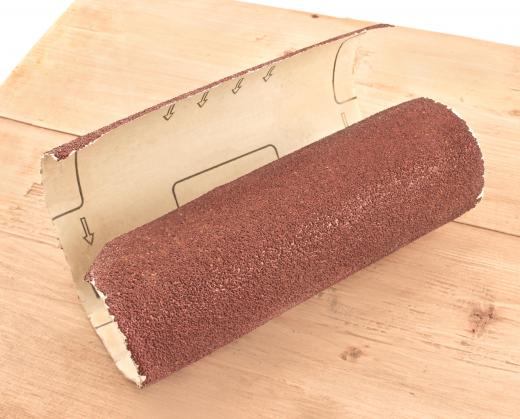A drum sander is a large machine used to sand wood and plastics. This piece of equipment is used on large woodworking projects, and when forming plastics. A drum sander can be purchased pre-assembled or can be created at home, using items purchased from the local hardware store. A drum sander is usually 29 1/2 inches (0.74 meters) wide, 24 1/2 inches (0.62 meters) long, and weighs at least 190 lbs (86 kilograms). The equipment requires at least 2 feet (0.6 meters) clearance on all sides to ensure sufficient working room.
The purpose of a drum sander is to efficiently sand a large number of woodworking pieces quickly and neatly. The unit comes with a suction mechanism to remove sanding debris from the work area. This unit is used to sand materials at a higher speed than other types of sanders, while providing the operator with the freedom to use both of their hands to manipulate the work item as needed.

The unit is set up so that sandpaper can be easily changed to provide different finishes. The sander itself is mounted on its own stand and is equipped with a mounted light for improved work area visibility. Drum sanders are often found in machine or woodworking shops, hardware stores, and hobby clubs.
When purchasing a drum sander, there are three factors that you need to consider; the frequency of use, the types of materials you plan to use and the area where the sander will be located. All of these items have an impact on the model that will best meet your needs.
The rate of planned sander usage has a direct relation to the amount of money that should be invested in the equipment purchase. If you are purchasing a unit for your home, make a list of the projects you plan to complete in the following year and determine how much time you will need to spend at the drum sander. If the usage is less than 20% of the total project time, you can purchase a less expensive, home workshop model. However, if you estimate that between 25% and 50% of total project time will be spent using the sander, then you should invest in a professional grade unit.
Look at your project list and think about the materials that you are going to be using and the amount of sanding required. Determine if the wood is hard or soft and if plastics will be required. These decisions determine the amount of sandpaper that you need to purchase and the grades required.
